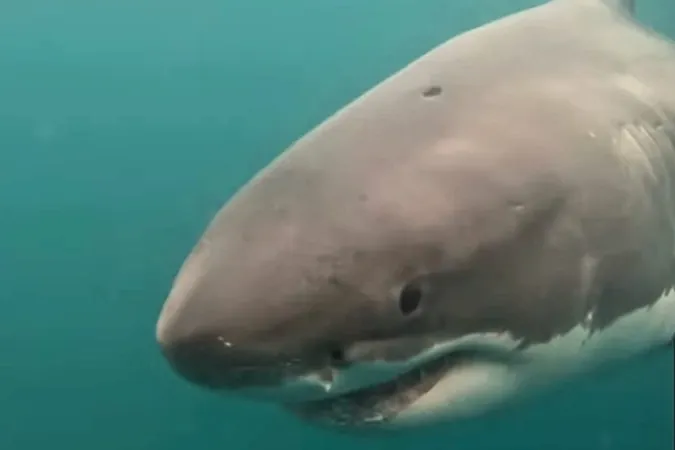
Mystifying Mark: 16ft Great White Shark Discovered with Circular Hole in Head—Here's Its Shocking Story!
2025-06-10
Author: Wei
Deep beneath the waves, the life of a great white shark remains largely a mystery. However, every scar or injury tells a tale, revealing secrets about their encounters with the environment, prey, and humans.
A Groundbreaking Study Sheds Light on Shark Scars
A recent study featured in "Frontiers in Marine Science" dives into the study of scars on great white sharks (Carcharodon carcharias), revealing their origins and what they mean. Scot Anderson, a researcher with the California White Shark Project, emphasizes that these injuries can be classified into categories that explain their history.
Some scars are distinct, such as the recognizable bite from a cookiecutter shark (Isistius brasiliensis), which leaves behind a perfectly circular wound. The California White Shark Project released a compelling video showcasing a 16ft female great white sporting an unusual scar on her head, resembling a dolphin's blowhole—proof of her encounter with a cookiecutter shark.
Evidence of Their Offshore Adventures
According to Anderson, these circular wounds suggest that great whites often sustain them during specific migration phases when their habitats overlap with those of cookiecutter sharks. But that's just the beginning of the story.
Scars: A Window into Shark Life
Different scars tell various stories—some might signal encounters with boats or scrapes from rocky terrains. Interestingly, mating scars are also present; females can exhibit 'light impressions' from male bites during copulation, hinting at the secretive nature of white shark reproduction.
"Males must grip the females by biting them to mate," Anderson notes. Observations of these 'hold bites' are often mostly healed, indicating that mating happens offshore, offering vital clues on the reproductive habits of these enigmatic predators.
Decoding the Language of Scars
Interpreting these injuries involves understanding their causes. The study outlines a systematic classification system for different wounds, where spaced dots could indicate parasitic copepods, while a series of parallel cuts might suggest a boat propeller's path. Additionally, a white rope burn could be evidence of entanglement in fishing gear.
Anderson believes this research not only deepens our understanding of great whites but also contributes vital pieces to the puzzle of their lives—each scar narrating an experience that enriches our fascination with these magnificent sharks.
Uncover More Wild Wonders!
Want to learn more amazing tales from the ocean? Discover the swell shark's self-inflation abilities or meet the bonnethead shark, one of the few species that can reproduce without mating!




 Brasil (PT)
Brasil (PT)
 Canada (EN)
Canada (EN)
 Chile (ES)
Chile (ES)
 Česko (CS)
Česko (CS)
 대한민국 (KO)
대한민국 (KO)
 España (ES)
España (ES)
 France (FR)
France (FR)
 Hong Kong (EN)
Hong Kong (EN)
 Italia (IT)
Italia (IT)
 日本 (JA)
日本 (JA)
 Magyarország (HU)
Magyarország (HU)
 Norge (NO)
Norge (NO)
 Polska (PL)
Polska (PL)
 Schweiz (DE)
Schweiz (DE)
 Singapore (EN)
Singapore (EN)
 Sverige (SV)
Sverige (SV)
 Suomi (FI)
Suomi (FI)
 Türkiye (TR)
Türkiye (TR)
 الإمارات العربية المتحدة (AR)
الإمارات العربية المتحدة (AR)